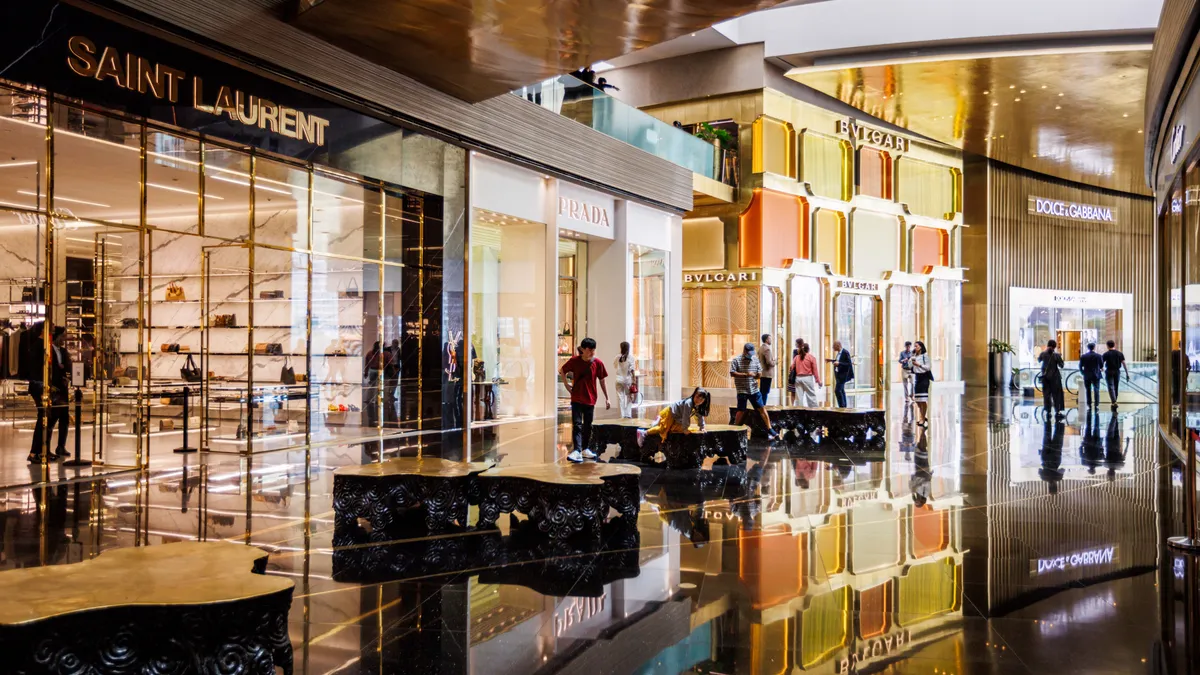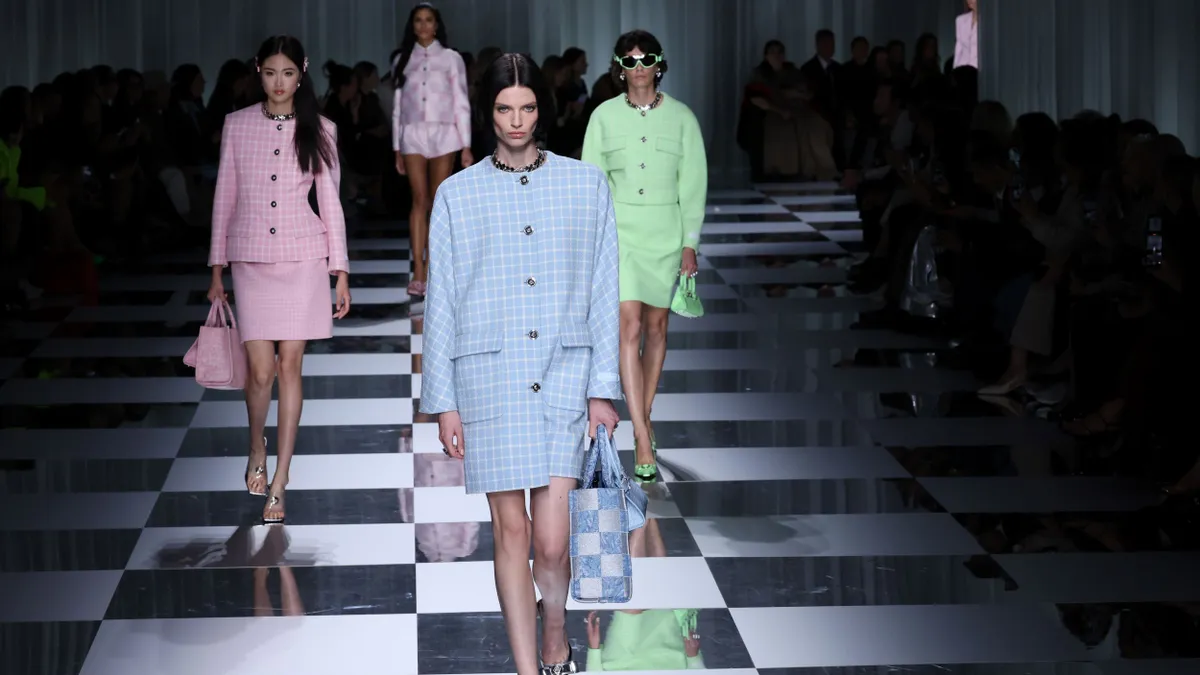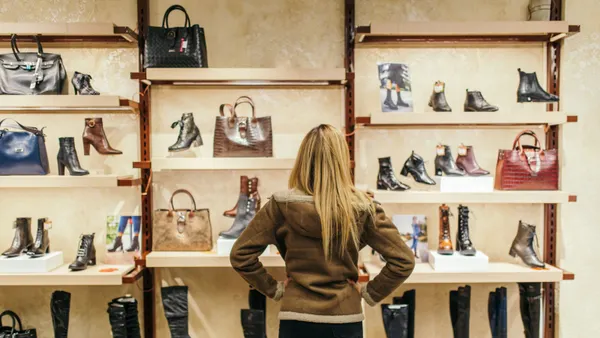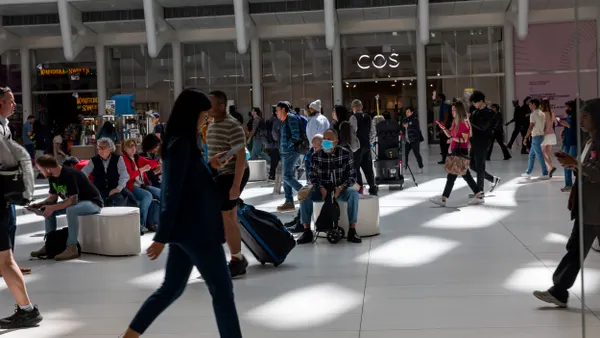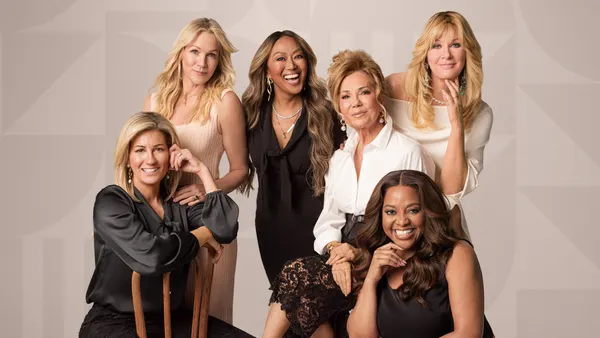Dive Brief:
- Luxury fashion shoppers are optimistic, and 58% said their financial expectations will be better in the next 12 months, according to a July report from Morning Consult.
- The “Data Deep Dive Into Luxury Consumers” examined luxury consumers in China, France, India, Mexico and the U.S., and found that while “similar to the overall luxury audience in terms of their personal finances,” luxury fashion shoppers are “notably younger, and more optimistic about their financial futures.” Nonetheless, 51% stated that they tend to prefer “the less expensive option” when shopping.
- The report also noted that 70% of luxury fashion consumers are trend focused and 77% of them are tradition oriented. In addition, 46% of these consumers expressed “a strong desire to be part of the popular crowd” and 88% said “they set a lot of goals in order to get ahead.”
Dive Insight:
As economic challenges continue to impact the luxury sector, fashion brands have been struggling to connect with consumers. Burberry replaced its CEO amid falling sales, while Kering, which projected a significant H1 drop, recently replaced the president of its Americas division and appointed a chief brand officer.
“Luxury shoppers represent a small portion of the population, but their spending power demands brands understand them,” the report stated. “Uneven performance among luxury brands in the last year illustrates the mercurial nature of this cohort.”
Using data from Morning Consult Intelligence, the report found that shoes, jewelry and watches saw “the largest price point uplift,” meaning that those categories had the largest share of luxury buyers “willing to pay 3 times or more than the standard category price.”
Meanwhile, handbags and cosmetics and fragrance products saw the largest shares of luxury buyers unwilling to pay more. The report noted that “these are also categories with primarily female customers” and added that people “who don’t typically shop in a category are less willing to pay more for those purchases.”
Morning Consult said its consumer spending tracking data allowed it to compare the spending of high-income consumers to other groups, and that “their incremental spend is largely consistent with the premium price range that luxury buyers indicated they’re comfortable paying.” The report added that in May, people “in households earning more than $100,000 annually spent 49% more on apparel purchases than the general population of apparel buyers that month.”
The report defined luxury consumers in the U.S. as people who earned at least $75,000 annually and had a household income of at least $100,000 annually. Additionally, luxury shoppers agreed with the statement “I am typically willing to pay more for high-quality items,” and luxury buyers were defined as consumers who said they made a luxury purchase in the last six months.
Luxury fashion shoppers also said they were either “absolutely certain” or ”very likely” to consider buying from at least one of the following 14 luxury apparel brands: Arc’teryx, Armani, Balenciaga, Bottega Veneta, Canada Goose, Chanel, Christian Dior, Fendi, Gucci, Hermès, Louis Vuitton, Moncler, Prada and Tiffany.
Data featured in the report came from online surveys conducted between May 18 and May 19, and June 22 and June 23, 2024, among representative samples of roughly 2,200 U.S. adults. Data was weighted to approximate populations of adults based on age, gender, race, educational attainment, region, gender by age and race by educational attainment. Morning Consult audience data came from Morning Consult Intelligence.



